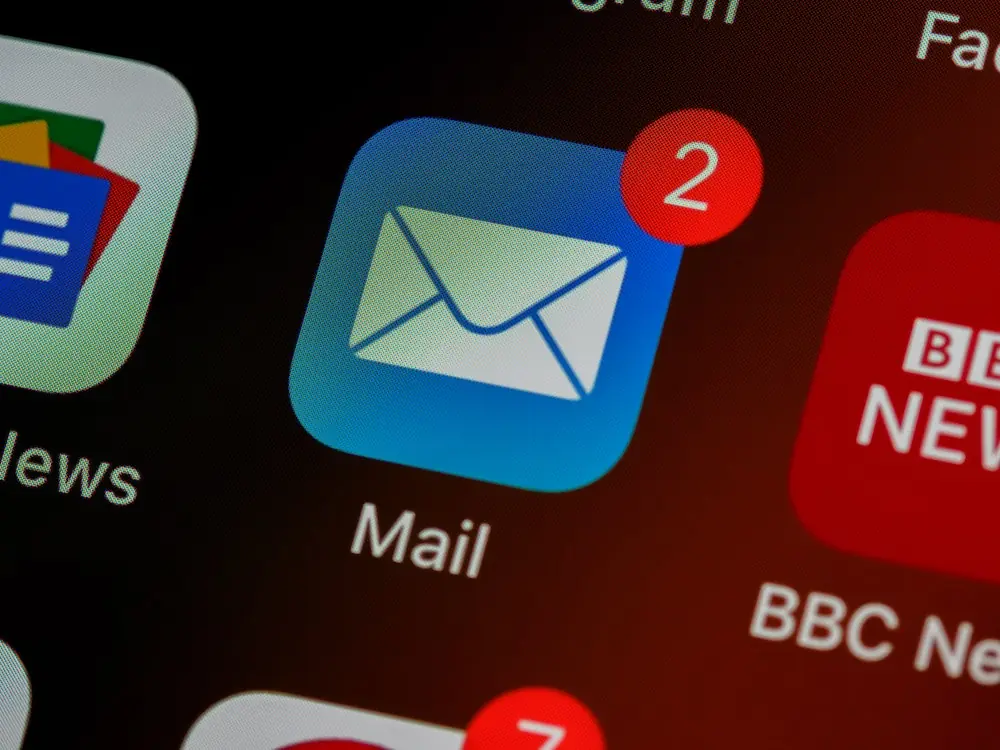Email marketing plays a big role in the world of eCommerce. After making a sale, getting a potential customer’s email address should be one of your biggest priorities. An email address is more than just a way of getting customers to interact with your site, though. It’s actually very valuable. In fact, email marketing converts to an average of $36 spent by customers for every $1 you spend on sending emails. There aren’t many investments that give you this much of a return. That’s why it’s a good idea to put some thought into sending out a marketing newsletter.
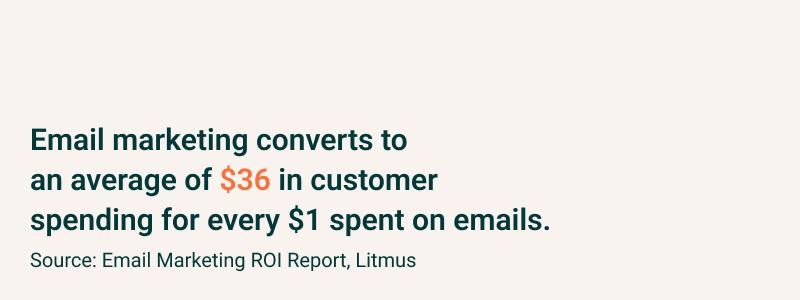
Newsletters are a common way of keeping in touch with current and potential customers. They help your business build trust, a crucial factor in whether or not consumers will commit to buying your products.
When consumers are not familiar with your business, they lack confidence in your brand and may decide to wait before making a purchase. But if they sign up for your mailing list, you still have a chance to convert. After receiving several newsletters (including discount codes and information about your business), consumers are more likely to go ahead with the purchase.
Writing an effective newsletter is challenging for many business owners. With lots of conflicting information out there, it can be difficult to know the best way of doing it.
Here are some basic steps you can follow in your mission to create the best possible newsletter.
Figure Out The Goal Of Your Newsletter

Before you dive into your newsletter, you should have a clear goal in mind as to what you want it to achieve. It will be challenging to grow your audience if you are writing generic newsletters with no purpose.
One common goal for newsletters is to build long-term relationships with your audience. When consumers trust your business, they’re more likely to make a purchase.
Relationship-building newsletters don’t focus on selling anything. Instead, they aim to share useful information about your business or your particular niche. For example, if your business sells fitness-related products, a newsletter sharing tips for effective workouts could work well. While this newsletter probably won’t directly convert your email contacts into sales, it can go a long way in establishing your business as a respectable and professional company. This leads to more sales in the long run.
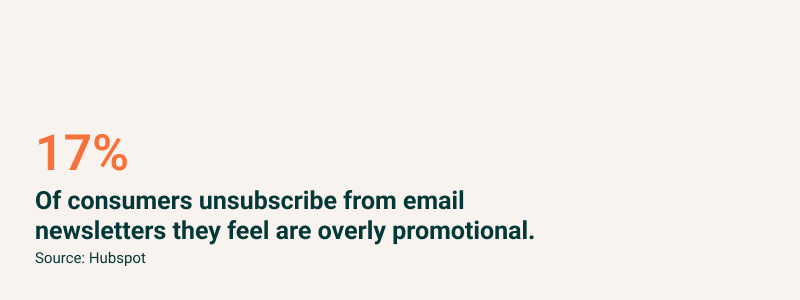
Another useful goal for your newsletter is to promote your products. You could highlight your product’s features, use time-limited discounts to encourage immediate purchases, or promote new and upcoming products. This type of newsletter is quite common, but should be used carefully. Around 17% of participants in a recent study said they unsubscribe from newsletters if they appear over promotional.
Subscribe to the eCommerce newsletter for
top industry insights
You also may want to use your newsletter as a way of generating referrals to your business. Those who signed up for your newsletter might know other people who are interested, too. Offering referral discounts and rewards can be a great way of getting the most out of your newsletter. You might be surprised at how many customers will share your business with a friend for a seemingly small reward.
Of course, your newsletter can have more than one goal. Make sure to be mindful and prioritize the goals of your newsletter so you’ll have the best chance of success.
Know Your Audience
Knowing your audience means understanding the type of consumer you’re hoping to reach. You want to have a good idea of the profile of those receiving your newsletter. This helps you plan your content as well as how often to send your newsletter.

It can be useful to break down the common traits of your customers and potential customers. Information such as their average age, location, preferences, and buying habits makes creating relevant content easier. Target content to these specific profiles and you’ll likely have more success.
You might find it beneficial to separate your audience into different segments based on their behaviors or preferences, too. For example, imagine you run a business specializing in travel products. Some of your audience may travel frequently by car but very rarely by plane. Others might take daily or weekly flights for work so have a strong preference for plane-based travel products. By splitting your newsletter subscribers into segments, you can send newsletters aimed at each person’s preferences without alienating other readers. This reduces unsubscribers.
Sending email newsletters with the right frequency can be a challenge for some businesses. The goal is to send them frequently enough to keep your business in readers’ minds when the time comes for them to make a purchase or refer a friend, but not too frequently that they become spammy. Once you know your audience, you should be able to come up with a workable plan for sending regular newsletters.
Choose a Newsletter Platform
There are quite a few platforms out there to create and send newsletter. Choosing the right one for your business can have a big impact on your success. Remember, it’s important to think about the future while selecting your newsletter platform. While you might only have a handful of subscribers now, your audience can grow quickly. Choose one that can handle your future audience as well as your current audience.
The features to look for in a newsletter platform depend on your goals, your audience, your technical knowledge, and any reporting you might want to see after each newsletter is sent.
Newsletter templates can be extremely useful. If your chosen platform has pre-built templates that you can edit and add your content to, it can save a lot of time and effort. Instead of spending hours designing your newsletter, you could have it ready to go in just a few minutes.
Personalization features can also be beneficial. For example, some platforms allow you to add your customer’s name in the “to” field. Personalized emails have a higher click-through rate, so this is a valuable tool. Other features such as scheduling tools and detailed analytics are also helpful, so do some research before selecting your platform.
In addition to features, don’t forget to consider the cost of each platform, subscriber limits, ease of use, and the reputation it has built. Using the right newsletter platform can make your life easier and contribute to your success or failure. Take your time, test them out, and choose the best one for you and your business.
Get Your Subject Line Right
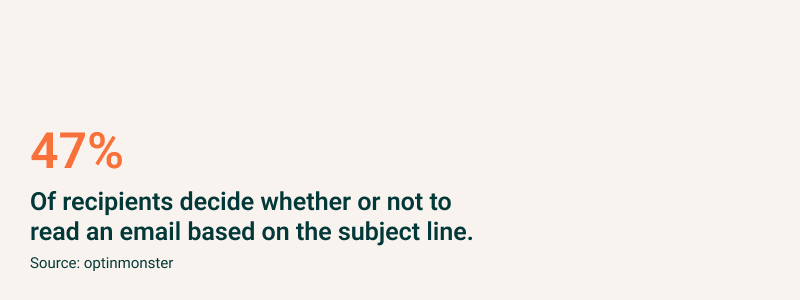
Think about the last time you received an email from a business. You see the sender, subject line, and preview text and immediately decide if it’s worth opening. In fact, 47% of people decide to open an email based on the subject line.
Therefore, it’s a good idea to put some serious thought into your subject line and preview text. The subject line should be short and sweet. You want to catch your recipient’s attention without sounding spammy. Make them smile with a clever pun, spark their FOMO with a time limited offer, or remind them of something that they really need.
Before sending your newsletter, brainstorm subject lines to find the perfect one for your business. You may want to test out different options to see how they affect your open rate.
Next, come up with your preview text. This is the short description or preview that shows up next to the subject line. This text can usually be up to 150 characters long, but some email clients display as few as 35 characters, so keeping it short is a good idea.
The preview text should compliment your subject line and tease the content of your email. Good preview text can even boost your open rate, so play around until you find something that will excite potential customers and speaks to your brand.
It’s also a good idea to include a call-to-action (CTA) in your newsletter. This is a button that recipients click that redirects them to the online location of your choice. You may want them to visit your website, to look at a particular product page, to sign up for something, or interact in any other way.
Think About Branding
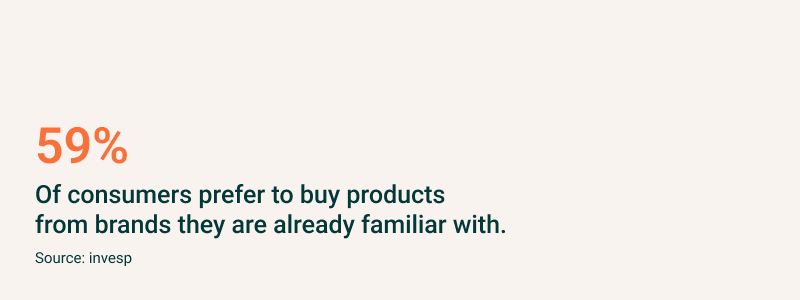
While the content of your newsletter is important, nobody will read it if your branding elements don’t capture people’s attention. People will remember your business based on the color scheme and design elements that they see. Besides, the template and design of your newsletter will either encourage people to open it or unsubscribe and delete.
Around 59% of consumers prefer to buy products from brands familiar to them. This is worth keeping in mind. If you are constantly changing the color scheme or the look of your newsletter, your audience could be confused as to whether the products featured within it are from a company they know and trust. On the other hand, if customers come to know and trust your brand colors, logo, and tone, they’ll be more likely to read through and even make a purchase..
Think About Frequency
One of the most challenging parts of newsletters is knowing how often to send them. You want your subscribers to expect them, to remember them, and to keep them in mind when the time comes for them to make a purchase. However, you don’t want them to remember your business as the one who spammed their inbox with dozens of unnecessary newsletters.
Finding the perfect frequency is challenging but there are guides to help you figure it out. 61% of consumers expect a minimum of one email a week from brands they follow, so this is a good place to start. However, businesses send emails at varying frequencies from daily to monthly. Anything less than once a month is probably not quite enough.
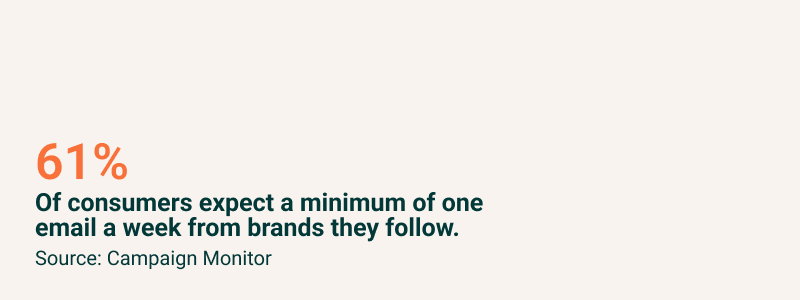
The time of day at which you send your newsletter also impacts the open rate and click through rate. Many companies have conducted research on the best time to send emails, and the results vary. However, many agree that in the morning, around 10:00 AM and in the late afternoon around 3:00 – 4:00 PM are good options.
Popular content
- 14 strategies to improve your eCommerce business’s financial health
- 50+ ChatGPT prompts to elevate your eCommerce business
- A guide to pricing your product on Amazon
- 5 marketing metrics all eCommerce businesses should track
- All about Amazon PPC
If your newsletter platform gives you reports on important metrics such as open rates and click-through rates, you might be able to find the best time to send newsletters to your audience based on their past behavior. It can take some time (and some trial and error) to find the best schedule for your newsletters. However, once you’ve found what works, you’ll be sure that your audience is reading your newsletters.
Be Ethical and Comply With Privacy Regulations
When you’re trying to get your newsletters out to as many people as possible, it can be tempting to take shortcuts. This is never a good idea. Buying lists of email addresses might increase your mailing list in the short term but it certainly won’t help your open rate or reputation. It also goes against privacy regulations.
There’s actually quite a lot to think about when it comes to collecting email addresses ethically and morally. You might think that if a customer places an order with you, you can go ahead and send them any emails you want. This is not true! Anyone placing an order should be given the option to opt in to receive future email communication from you, including newsletters.
Newsletter recipients should also be given the option to unsubscribe from your mailing list. Not only does this keep you in line with regulations, but it also can help build a positive reputation for your business.
Some anti-spam regulations require you to include your business contact details in each newsletter to track where the emails originate from. It’s also another way of building a strong, trusting relationship.
There are privacy and anti-spam regulations such as GDPR, CAN-SPAM, and CASL that can impose penalties on businesses for not following these practices. Spammy emails also tend to have lower open rates and click-through rates.
Sending Your First Newsletter
Before you hit the send button on your first newsletter, there are a few things to think about in order to get the most return on your investment.
First, you should decide who the newsletter will be from. Will it be from your business name or your personal name? Will it be from someone else altogether? Some businesses might want to be very professional and formal, while others might get a better result from being much more personal and approachable.
You should also think about what email address your newsletter will be sent from. If you use a no-reply email address, this could reduce the number of your newsletters that actually make it to your audience due to spam filters. Sending from a standard email address gives your subscribers the opportunity to reply directly to your newsletter. This may be useful for you depending on what you are trying to achieve with your newsletter.
Before you finally hit send, proofread your newsletter. Make sure that the content has a purpose and looks organized and professional. It’s always worth looking at a preview of your newsletter to see how it will look to recipients. Most platforms allow you to send yourself a test email, which you can check both on your desktop and mobile phone. Make sure the content is readable and that there are no errors.

After You Send Your Newsletter
Once you’ve sent your newsletter, it’s time to keep an eye on your analytics to see how effective it was. Tracking metrics like open rate, click-through rate, the number of people who unsubscribed, link clicks, website visitors, and sales numbers, are all valuable tools to help you understand how well your newsletter performed.
After You Send Your Newsletter
Once you’ve sent your newsletter, it’s time to keep an eye on your analytics to see how effective it was. Tracking metrics like open rate, click-through rate, the number of people who unsubscribed, link clicks, website visitors, and sales numbers, are all valuable tools to help you understand how well your newsletter performed.
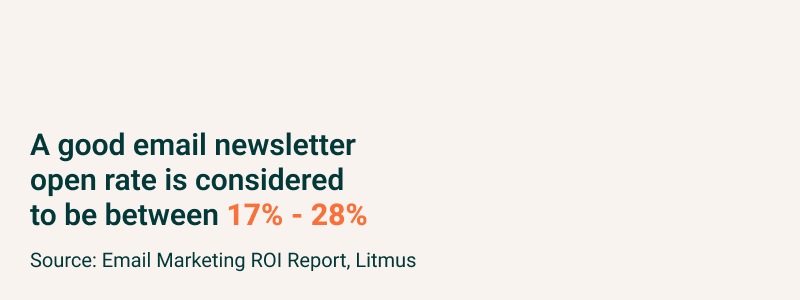
Depending on your industry, a good open rate is generally between 17% and 28%. A click-through rate of a little over 2% is considered optimal, and an average unsubscribe rate of 0.1% gives a basic idea of what to look for.
Once you have a good idea of how well your newsletter performed, you can use this information to help you with your next one. Aim for improvements in your metrics as you send more newsletters and learn what works and what doesn’t.
As your mailing list and business grow, you may need to change your newsletters from time to time. It’s a good idea to go back and reevaluate your goals every once in a while to make sure that your eCommerce marketing newsletter is doing all it can for your business.
Newsletters are a great way to grow your customer base. Of course, when scaling your eCommerce store, you’ll need funding to purchase inventory, keep your cash flow healthy, market your products, and more. 8fig’s Growth Plans are a great solution. We offer continuous, flexible capital to eCommerce sellers, infused at every stage of your supply chain. And you can get funded fast. So what are you waiting for? Sign up for a personalized Growth Plan today.
Subscribe to the eCommerce newsletter for
top industry insights
to our blog
Read the latest
from 8fig
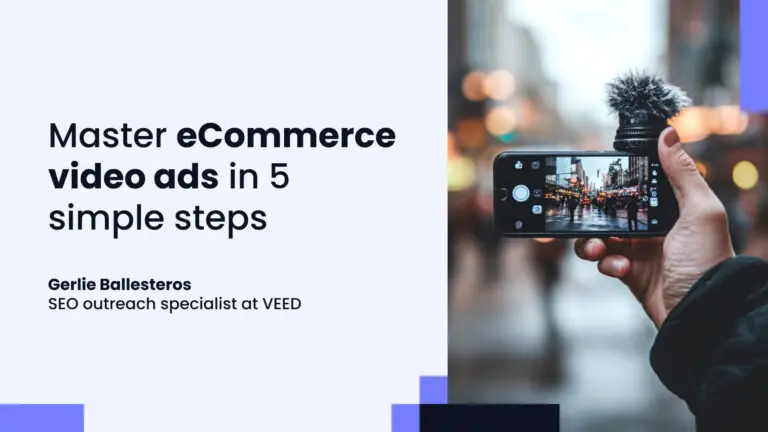
Video ads can make or break your eCommerce success. Learn five essential strategies to create high-converting campaigns that captivate and convert.

Crack the code to funding your eCommerce business with this step-by-step guide, and learn how to secure the capital you need to grow while staying on top of your strategy.

From managing cash flow to optimizing expenses, this guide offers actionable insights to secure your financial future. Explore the essential steps to drive profitability and long-term success.
